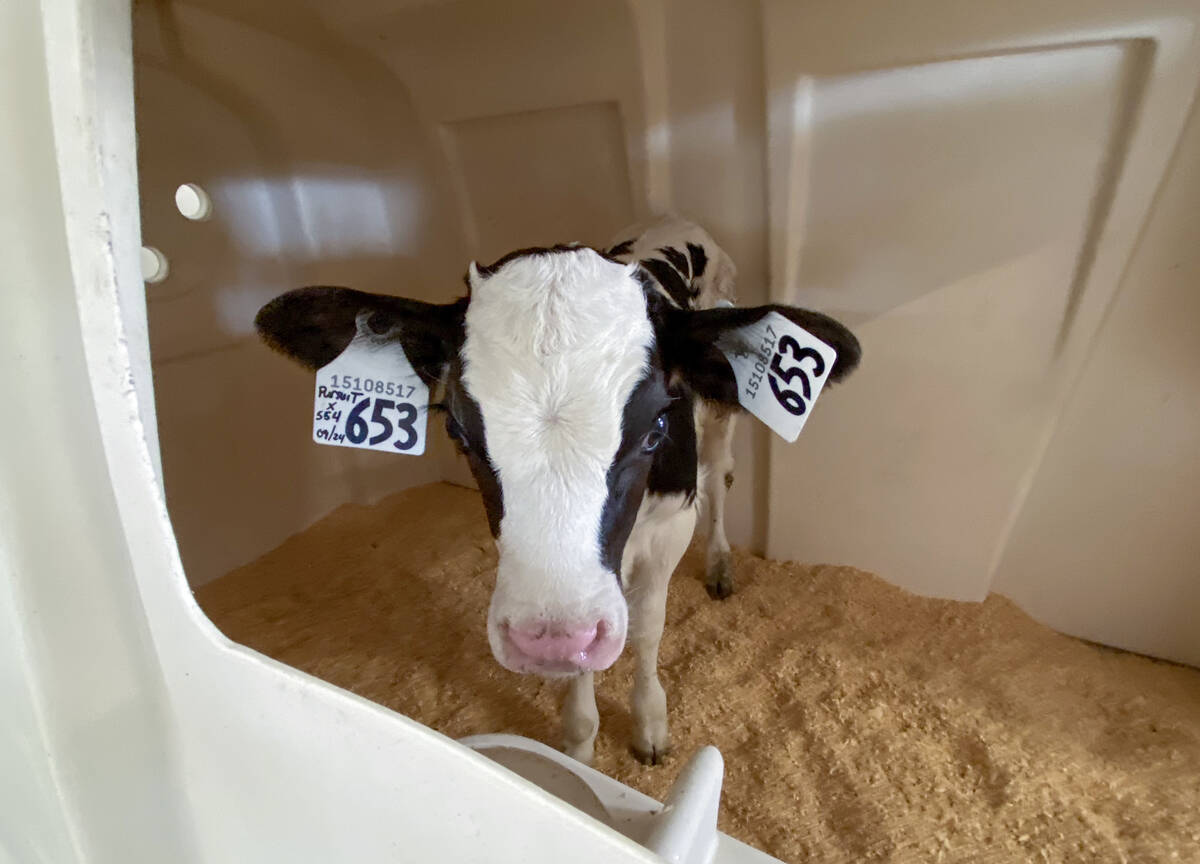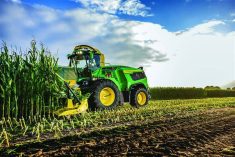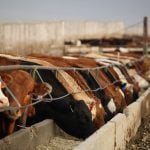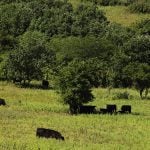In just one full growing season since its Canadian introduction, the Enogen line of corn hybrids has made serious inroads in the Ontario marketplace.
That’s according to Syngenta representatives who hosted an information day last month about the hybrids at the company’s research station in Arva.
Why it matters: Enhanced feed efficiency is a goal of livestock producers to improve cost of production and decrease climate change impacts.
Read Also

Lactanet turns methane expertise into business opportunity
Lactanet’s new fee-for-service breeding tool initiative to reduce greenhouse gas emissions in Canadian and Swiss Holstein herds will launch in April 2026.
The hybrids derive from insertion of the alpha amylase protein into corn’s DNA, leading to rapid transformation of the plant’s starch into sugar following harvest. The process, developed in the early 2000s, was originally introduced to market corn in the U.S. ethanol stream. Prior to the varieties’ development, alpha amylase was added during the ethanol production process to induce starch breakdown.
After taking ownership of the technology through corporate amalgamation, Syngenta began marketing the hybrids for silage production in the mid-2010s in the U.S. and introduced Enogen to Canada in 2023 through its NK brand.
Emma Dieleman, agronomist for NK and Enogen in Canada, said during the info day that there was limited hybrid availability in 2023 but this year there was “a pretty big range” of maturities available with Enogen genetics in Canada. More will be introduced in 2025.
Varieties grown this year at Syngenta’s Arva research station ranged from 80-day to 107-day maturity, and those same varieties saw uptake by growers from the far southwest to Bruce and Grey counties.
“We’ve got an Enogen hybrid for wherever you’re growing your corn,” Dieleman said, adding all are traited with Syngenta’s Duracade corn rootworm control gene.
Matt Rundle, Syngenta’s product placement scientist, said the patented stacking of Duracade and Viptera insect protection has also been developed for Enogen varieties. That stacking was available commercially in the U.S. in 2024 and he expects there will be limited introduction in Canada next year.
“This allows for some of those corn-on-corn acres to be grown and still have that insect protection,” Dieleman noted. It’s typically silage-specific growers who have crop rotation limitations that lead to corn-on-corn, so this is a good fit, she said.
Rundle and Mark Anderson, head of Enogen Feed, stressed that Syngenta is aware of concerns about corn rootworm control resistance and doesn’t encourage corn-on-corn rotations.
“Where I am in southern Wisconsin, we’re in a rootworm hotbed,” Anderson said. “In areas like that, we do not want to rely on one trait … We need to look at other tools.”
There are regions where rootworm pressure is low or absent and he believes the Duracade strategy is appropriate in those regions. Likewise in Ontario, Rundle said, “in some areas corn rootworm is not really part of the discussion.”
He said some livestock producers told him last year that growing Enogen allowed them to feed more cattle on fewer acres of corn, freeing up some corn-on-corn acres that could potentially be converted into longer crop rotations.
Also participating in a panel discussion were the father-and-son team of Shane and Tanner Jones, who milk about 50 cows near Kitchener.
“We’re very happy with it,” Tanner Jones said of their first two years growing Enogen. “Our biggest goal was to not lose any agronomic advantages (compared to the corn they had been growing) and to see a benefit in the feed.”
And those results happened.
The Jones’s fed chopped Enogen corn straight from the field last year, “and your typical green-chop response in the cows wasn’t there,” he said. There was a slight milk drop but that was likely tied to a change in feed, he said, and the cows recovered quickly.
Ted Koehler of Enogen’s U.S. ruminant nutrition team remembers contacting Syngenta’s top brass in Wisconsin back in the early 2010s and telling them they were wrong to market Enogen to corn growers. Instead of being offended by Koehler’s criticisms, the team offered him a job as a livestock nutritionist working for a seed company.
Ever since, he has talked about Enogen’s unique properties for silage production and feeding.
For some U.S. seed reps, it was difficult to figure out how to serve livestock growers and not just corn growers.
“Don’t ignore the nutritionist,” was his advice to seed salespeople.
Koehler said the enhanced breakdown of starch occurs due to interactions between alpha amylase and the corn caused by friction and heat generated during harvest. He confirmed the Jones’s assessment that this allows for almost immediate use of the chopped corn as feed without any health effects.
But he added that research trials have also shown the conversion of starch to sugar in Enogen-derived silage is more efficient over the entire year in the silo compared to conventional corn.
“The Enogen story, along with having great hybrids, is starch digestion,” he said.
It made sense on the Jones farm.
“If you get any benefit at all and you don’t give up any yield, why not give it a try?” Tanner Jones asked.
Having worked for several years on a custom chopping crew, Jones also offered his comparison between Enogen corn and brown mid-rib (BMR) corn, often touted for its high feed efficiency from the silage bunk.
With BMR corn, harvest timing is crucial. If weather or breakdowns intervene, a rapid drydown can quickly turn a promising crop into “a disaster.”
“Not so much with Enogen.”
Dieleman confirmed that, unlike BMR management, “with these varieties we don’t expect to have to treat them any differently than any other corn … If you grow Enogen the same way (as conventional corn), you can expect the same results and you can expect the same yield.”
The big difference is with the “marker” and “refuge” corn. In regular intervals throughout the field, there are cobs with purple kernels. This assures that any Enogen corn showing up in off-farm supply chains will immediately be identified and curtailed.
Enogen can only be grown under a stewardship contract with Syngenta, and must be used on-farm. That’s because rapid starch breakdown from alpha amylase can affect the way corn is processed and thus the end products from processing facilities.
“We really don’t want it to get into that (food processing) situation,” Dieleman explained. “It works in the barn. It doesn’t work in food production.”
The NK/Enogen agronomist showed two cobs: one regular cob and one with purple kernels.
“They’re pretty cool,” she said of the marker cobs. “They’re kind of fun to look for as you walk through the stand.”
Mark Kerry, NK and Enogen sales manager in Canada, said numerous dairy producers told him last year they would fill one bunk silo with Enogen to give it a try. Many of them ordered seed for 2024.
“Our retention rate is extremely high,” he reported. “That’s another indicator that, when you try (Enogen), it works.”















